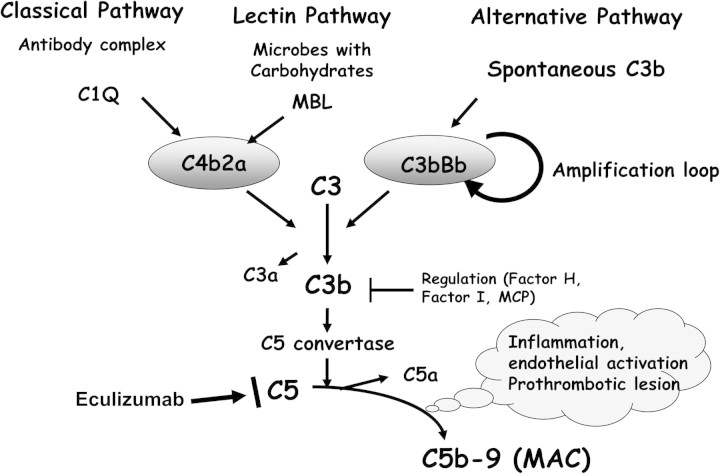Fig. 1.
The complement system is a major innate immune defence mechanism. Complement may be activated by the classical, lectin or alternative pathways, all leading to the cleavage of the inactive central component C3 to biologically active C3b. C3b binds covalently to any surface, either foreign or self. When C3b is bound to positively charged surfaces (called alternative pathway activator surfaces as present in microorganisms) C3b interacts with factor B (FB) to form the C3 convertase (C3bBb) of the alternative pathway amplification loop and may generate a C5 convertase leading to the release of C5a, which is also an anaphylatoxin, and C5b which initiates the formation of the membrane attack complex (MAC), by binding C6 and C7. The C5b67 inserts into the membrane where it binds C8 and many molecules of C9, forming a pore. It can be cytolytic, forming a transmembrane channel, which causes osmotic lysis of the target cell or sublytic, associated with cell activation. In order to avoid complement hyperactivation, the alternative pathway C3 convertase is tightly regulated.

